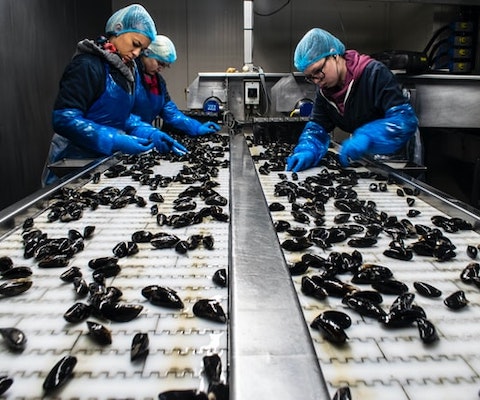Food Innovation
It is clear that the current agri-food system cannot remain the business-as-usual system that has been leading us towards the unprecedented challenges we face today. It is overdue for disruption.
When we talk about food, innovation is a word that can be applied in different contexts and scenarios, and with infinite declinations. From global to local, food innovation touches every stage of the food supply chain.

Innovation in food production may range from digitalisation of processes to reduce the use of natural resources, such as vertical farming or agriculture in environmentally controlled environments, until traditional and regenerative agricultural practices.
Innovation in the food distribution may involve more efficiency in the cold-chain, investments in better infrastructure, shortening of the food supply chain, systems of food redistribution or donation of surplus or even improved food packaging design.
Building an ecosystem of innovation in Pollica, through the Paideia Campus, includes partnerships with local, European, and international organizations to promote the birth of enterprises, but also the prototyping of innovative solutions applicable to the typical production models of the Mediterranean basin.
It means developing a Mediterranean Laboratory at the service of the local community to foster environmental regeneration, smart living, and the preservation of cultural heritage.
In this sense, innovation and technologies are conceived in the etymological meaning of the ancient Greek word, “techne,” meaning “manual ability, art, craft,” that is something very related to humanity and our ability to transform natural raw material into a work of art.
Words Innovation
Food innovation stretches to reach out to the final consumers, making them more responsible, reliable, and careful about their food choices.
Dissemination, diffusion, and awareness within the general public on agri-food issues is crucial to make information accessible to consumers and accelerate the path towards a more sustainable diet and lifestyle.
Examples range from better food labels, packaging that slows down food spoilage, cooking classes to reduce waste, or simply the way the current challenges are explained and tackled through journals, advertisements, and social networks.
Each and every one of us is called upon to make a concrete contribution. The systemic approach is primarily an individual approach: every consumer, by eating and shopping, has the possibility and responsibility to generate an impact if he/she makes choices with awareness and intentionally.
Within this context, words play a central role. They shape human sensibilities and can convey important and powerful messages. Words can educate towards biodiversity preservation, responsible use of resources, food waste reduction, territoriality, culture, renewable energies, starting from common needs.
A new lexicon, that of sustainability, is needed.
“Language guides our reasoning towards events. […] It’s important to focus on how the language you speak shapes the way that you think. And that gives you the opportunity to ask yourself: why do I think the way that I do? How could I think differently? And also: what thoughts do I wish to create?”
The EIT Food Journalism Award
From the commitment of those in the press, radio, TV, and the Internet, who continue to speak up on the close relationship between food, innovation, and sustainability, EIT Food has created the Italian Journalism Award on Food Innovation and Sustainability, to reward the voices of journalism that spread the values related to the agri-food sector, and tell the story of food from the point of view of technological innovation and environmental sustainability.

The contest, organized in collaboration with the National Union of Journalists’ Associations for Agriculture, Food, Environment, Territory, Forestry, Fisheries, Renewable Energies (UNAGA), involved more than 40 Italian journalists who were selected by an outstanding jury according to the following criteria: relevance of their content to the agri-food sector, clarity of exposition, and impact.
Yesterday, Pollica and specifically the the Castle of the Princes Capano, hosted the official EIT Food Journalism Award ceremony and welcomed the two final winners:
- FEDERICO TURRISI (Ohga) – 1st place – with his article on climate label, digs into complex topics such as the Nutri-Score, Eco-score, label transparency, and false myths on GHG emissions on food.
- GIANLUCA ATZENI (Tre Bicchieri – the economic weekly of Gambero Rosso) – 2nd place – with his article on food, wine, and biotechnologies, exploring the differences between Genetically Modified Foods, assisted evolution technologies, novel/new genomic techniques, and new breeding techniques, in the broader context of food safety and sustainability.
The ceremony, that comes at the conclusion of a three-days event in Pollica, in celebration of the Italian Cuisine Week in the World, has been an opportunity to disseminate knowledge, best practices and testimonials on issues of technological innovation and environmental sustainability, as well as symbolically support the winner journalist’s activity, thanks to the economic prize granted by EIT Food Journalism Award: 1,500 euros for the first runner-up and 700 euros for the second runner-up.
If you missed it, you can rewatch it here.

